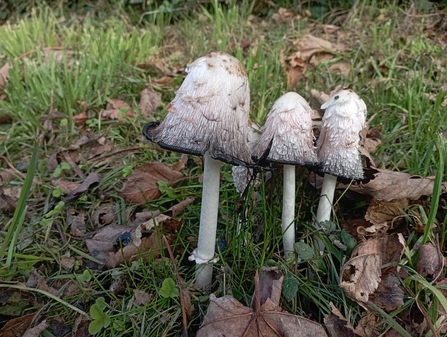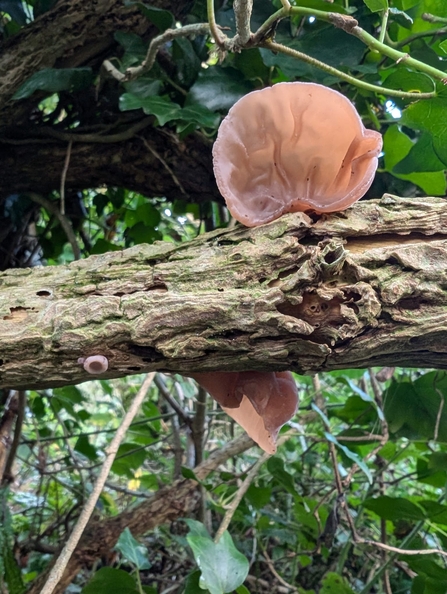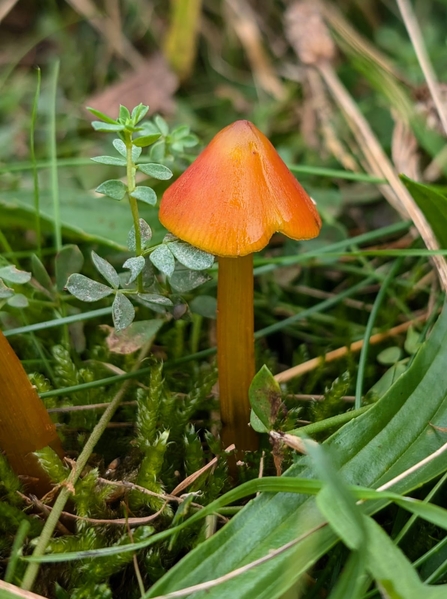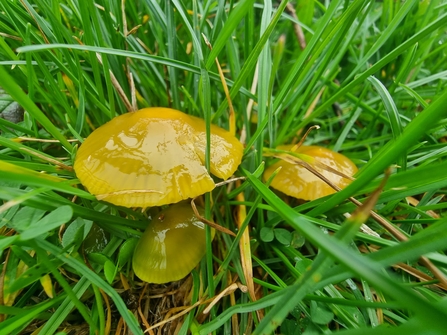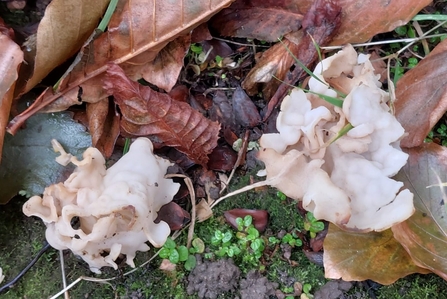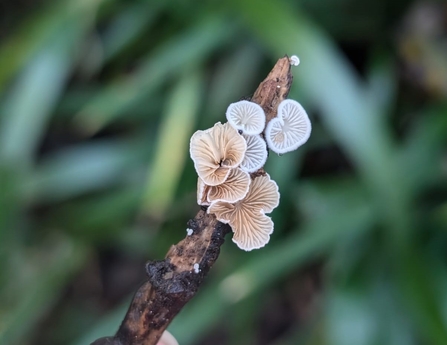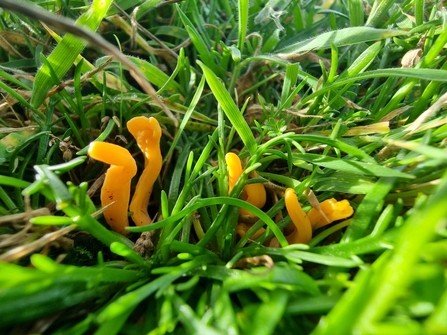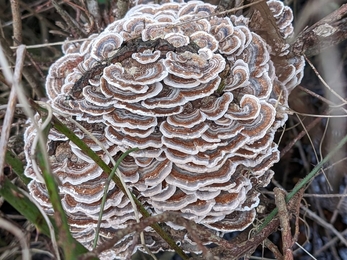While some fungi can be identified by the naked eye—using clues such as size, shape, texture, color, gills, smell, and habitat—many require a microscope for accurate identification. The parts we typically see are their fruiting bodies, while the majority of the fungus remains hidden beneath the soil in a vast network of mycelium.
Fungi and trees often form beneficial relationships. Fungal filaments help plants absorb extra water, minerals, and nutrients. In return, the fungus receives sugars produced by the plant through photosynthesis. Unlike plants, fungi cannot create their own food through photosynthesis. Instead of cellulose (found in plant cell walls), fungi have chitin in their cell walls. And, unlike animals, fungi do not ingest their food; they digest it externally and then absorb the nutrients.
Many fungi play a crucial role in nature’s recycling process, breaking down dead and decaying organic matter. However, not all fungi are decomposers—some are parasites that feed on living organisms.






